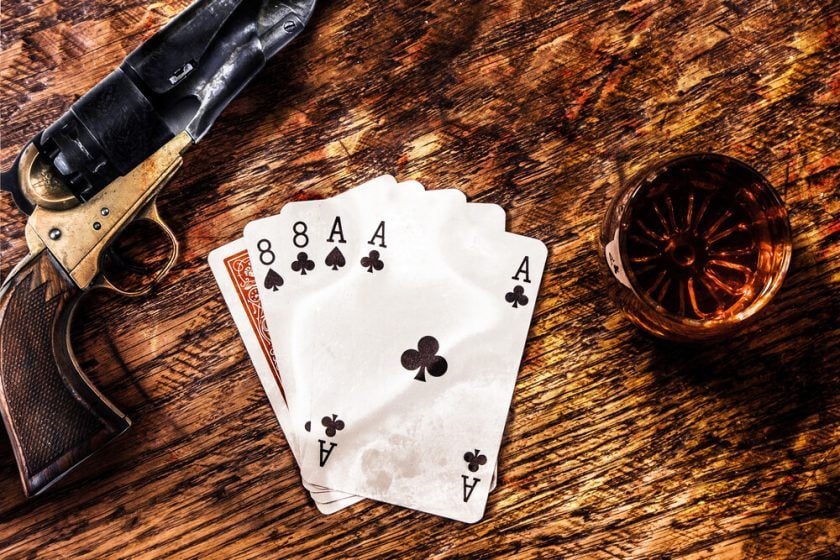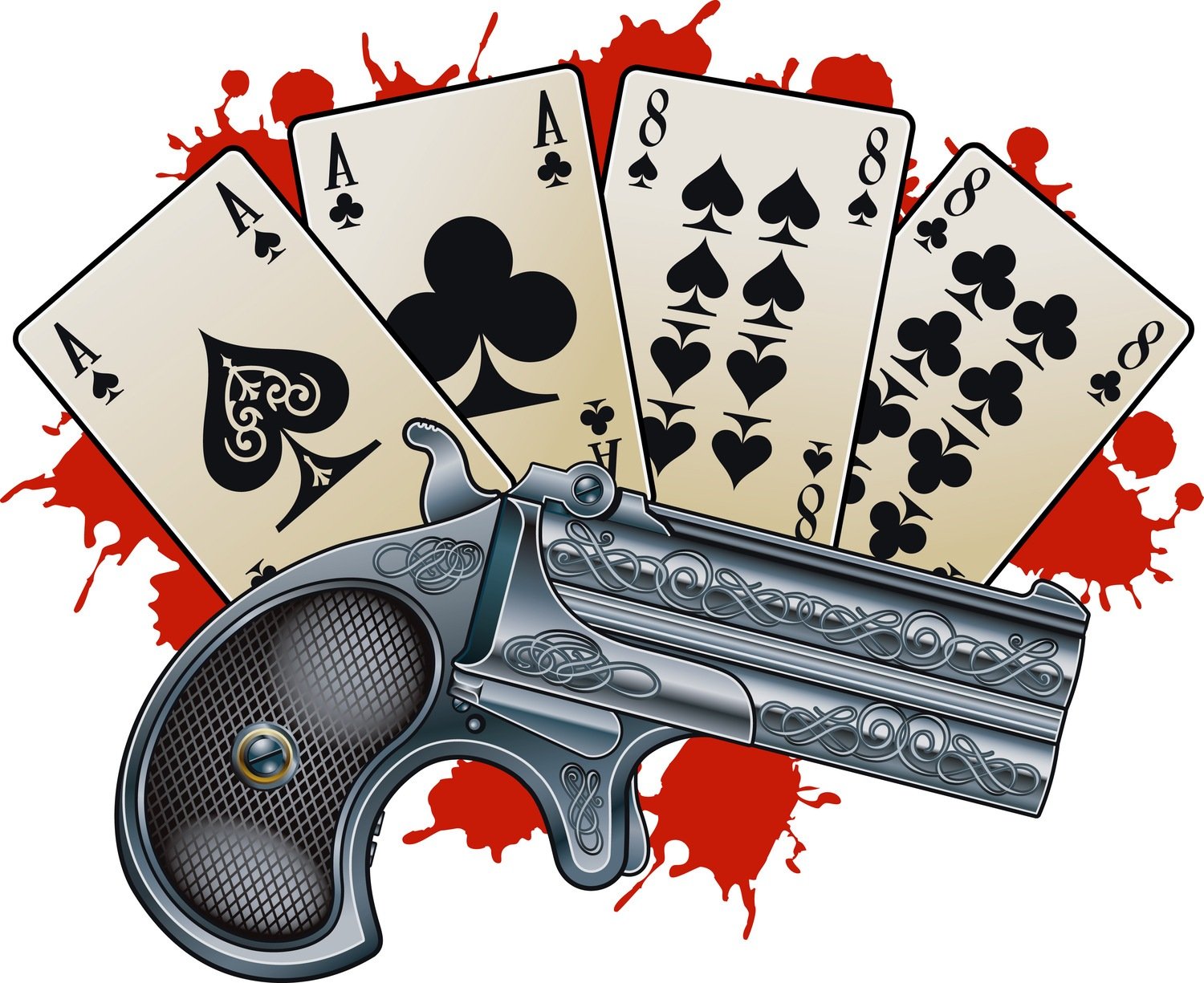Dead Man’s Hand in Poker: Origins, Meaning, and Playing Strategy

Understanding the Dead Man’s Hand: What Makes it Legendary?
The Dead Man’s Hand is one of poker’s most evocative and storied combinations. It is identified by a set of two black aces and two black eights, plus an unknown kicker card. Many poker players, especially those with a superstitious streak, view this hand as unlucky due to its notorious history. The hand’s enduring reputation largely stems from the dramatic tale of Wild Bill Hickok’s final poker game, forever etching “aces and eights” in the lore of the game.
Let’s explore exactly what the Dead Man’s Hand is, how it came to be so infamous, and how you can navigate this hand when it appears in your own game.
- The Dead Man’s Hand consists of two black aces (Ace of Spades and Ace of Clubs) and two black eights (Eight of Spades and Eight of Clubs), along with any fifth card.
- This hand’s fame originates from the fatal poker game of Wild Bill Hickok.
- Since then, many players have associated aces and eights with misfortune.
- In modern play, this is considered a marginal hand requiring strategic finesse.
- This article unpacks its history, legendary status, and its role in poker strategy.
The Wild Bill Hickok Story: How Legend Was Born
The tale of the Dead Man’s Hand begins with James Butler “Wild Bill” Hickok, a legendary figure in the American Old West. Known as a gambler, lawman, and gunfighter, Wild Bill met his end during a game of poker—cementing the hand he held as iconic.
On August 2, 1876, Wild Bill was playing poker in Deadwood, when Jack “Crooked Nose” McCall, aggrieved from earlier losses and reputedly insulted by Hickok’s offer to buy him breakfast, returned to the saloon. Normally, Hickok would sit with his back to the wall, but on that day, he was forced to sit with his back to the room. Seizing the opportunity, McCall shot Hickok in the back of the head, sealing both Hickok and his final hand’s place in history.
While poker rooms today are much less perilous, the symbolism of the hand endures. The exact cards in Hickok’s hand were never fully confirmed, but legend immortalized the black aces and eights.
Decoding the Hand: Why Aces and Eights?
So, how did two black aces and two black eights become synonymous with the Dead Man’s Hand?
Historical records show that after Wild Bill’s death, stories rapidly spread throughout the Old West. By 1886, references to the “dead man’s hand” began appearing in print, though early mentions described it as three jacks and two tens. It wasn’t until the 1920s, with the publication of “Wild Bill Hickok: The Prince of Pistoleers,” that the hand’s current composition—two black aces and two black eights—became solidified in the public’s mind.

Image credit: Armi1961 Photo/Shutterstock
Over time, this specific combination became embedded in poker folklore, often considered a harbinger of bad luck—even if its true origin remains a matter of debate.
Integrating the Dead Man’s Hand into Modern Poker Strategy
Encountering the Dead Man’s Hand in a real-money or online game can prompt hesitation or excitement, depending on your disposition. If you believe in poker superstitions, you might be tempted to fold outright. However, most experienced players recognize that while this hand has a unique history, its practical value in gameplay comes down to smart strategy.
Here’s an overview of how the Dead Man’s Hand stacks up:
– Two pairs, especially with aces and eights, can offer a solid position on the flop.
– The hand’s strength depends largely on the context—such as the actions of other players and community cards.
– You’re in a strong spot against single pair hands like pocket tens, nines, sevens, or sixes.
When considering whether to play this hand, weigh the potential for improvement (like catching a full house) against the danger of stronger combinations emerging as the hand progresses.
Playing the Dead Man’s Hand: Strategic Do’s and Don’ts
If you’re dealt an Ace-Eight, your approach will likely vary depending on your seat and your style of play. Here are some key points:
- From a late position, you may choose to call or even raise, especially if you sense weakness from earlier players. However, folding is also common among cautious players—regardless of superstition.
- If there’s a sizeable raise before you act, it is often wise to fold, especially if no matching aces or eights appear on the flop.
- Hitting only a single pair of aces post-flop leaves you vulnerable, given the low kicker.
It’s crucial to understand that while the hand is memorable, its actual power is relative—two pairs is a respectable outcome, but not unbeatable.
The Dead Man’s Hand Beyond Texas Hold’em
Historical accounts suggest that Wild Bill was playing 5-card stud at the time, not Texas Hold’em. In stud games, where players have all five cards in their hand from the outset, aces and eights could prove formidable. In contrast, Texas Hold’em requires more caution since community cards significantly shape final hands, and two-pair combinations can be vulnerable.
For reference:
– In Texas Hold’em, two pairs is an average winning hand; aces and eights is a decent combination, but susceptible to higher pairs, straights, or flushes.
– In 5-card stud or Omaha, such a hand can command more strength, as full houses or trips are less common.
Advice for Poker Beginners: Aces and Eights in Play
New poker players may see aces and eights as a tempting hand to bet heavily on. While two pairs, especially with aces, look attractive, experienced players know that the relative power of this combination is moderate. It can win, but also exposes you to risks if another player holds a higher two-pair, trips, or better.
– Assess your table and position.
– Avoid over-committing without backup—such as the potential for a full house.
– Recognize that two pairs can be strong in some hands, but should not inspire reckless betting.
The Lasting Appeal: Why the Dead Man’s Hand Still Matters
Few poker hands spark as much narrative or superstition as the Dead Man’s Hand. Its historical association with Wild Bill Hickok brings intrigue to every table—and has been featured in countless books, movies, and discussions about poker’s colorful past.
However, don’t be too hasty to throw this hand away out of fear. With sharp tactics and situational awareness, aces and eights can win you a pot as easily as any other two-pair.








